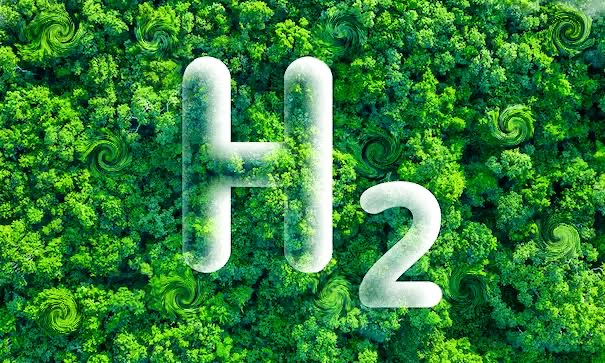With substantial renewable energy resources, Egypt, Morocco, Namibia, and Ethiopia are well-positioned to drive the development of a robust green hydrogen ecosystem.
A new International Solar Alliance (ISA) study—Readiness Assessment of Green Hydrogen in African Countries—is an in-depth analysis of the four African countries “that have strong developing trends and considerable potential to become major green hydrogen hubs.”
“All candidate countries have significant renewable resource potential for green hydrogen production.
“All the countries are also taking initiatives towards increasing the share of renewables in their electricity generation mix,” said the ISA-Denmark Partnership study.
The ISA report said that many countries have announced government-to-government (G2G) partnerships between the EU and other nations for the development of green hydrogen ecosystems, covering functions such as partial project financing, project construction, research and development, skilling, manufacturing, commodity offtake, etc.
“Countries with substantial mineral reserves can leverage this opportunity to integrate the hydrogen and metal processing sectors, producing ‘green metals’ like green steel.
“The demand for these green metals is expected to rise in the EU due to stringent emission reduction policies, such as the Carbon Border Adjustment Mechanism (CBAM).”
The study said that, apart from Ethiopia, the other three countries have formulated their hydrogen strategies or roadmaps along with production targets.
The countries also have international partnerships to promote research, product offtake, financing, and skills development.
“For example, Morocco aims to strengthen its ‘privileged partnership’ with the European Union (EU) for green hydrogen/green ammonia exports, thereby partially securing commodity offtake. All shortlisted countries are offering significant non-financial enablers to project developers to promote green hydrogen projects.”
Also, the land auctions in Egypt and Morocco are significant, as these countries are not only providing land near ports to facilitate ammonia exports but have also committed to contributing equity to projects.
“Additionally, they are providing shared infrastructure such as power evacuation systems, hydrogen storage, and transformers, among other facilities.”
Financing can be challenging for green hydrogen due to the nascent nature of the sector and the paucity of commodity offtakers at current price points.
However, the countries can consider innovative financial solutions and de-risking mechanisms to promote green hydrogen projects.
“There are several important examples of various financial instruments—such as tax credits, contracts for difference (CfDs), viability gap funding (VGFs), and demand aggregation—being adopted by some countries such as the US, Japan, and India.
“Egypt and Morocco have offered some non-financial enablers such as land allocation, shared infrastructure development, equity infusion, etc.”
The study says that it is preferable to use baseload or high-capacity utilisation factor (CUF) renewable energy for green hydrogen production.
This enables cost reduction due to downsizing of electrolysers and improvement in their utilisation.
For example, the hybridisation of PV (photovoltaic) and onshore wind, if possible, can help increase the availability of renewable energy.
This needs to be accompanied by sufficient transmission strengthening/expansion to enable long-distance transmission of power to green hydrogen plants.
Sources like concentrated solar power (CSP), hydro, offshore wind, and geothermal energy need to be studied in detail, as almost all the countries have one or a combination of such high CUF renewable energy resources.
“The development of a green hydrogen ecosystem offers a significant opportunity for several African countries to grow their economies in a sustainable and ‘future-proof’ manner. Many of these nations possess substantial renewable energy potential, including solar, wind, hydroelectric, and geothermal resources,” the report says.
Namibia is ideally positioned to advance renewable energy and hydrogen projects, thanks to its strategic geographic location, rich renewable resources, and low population density. With one of Africa’s highest solar irradiance levels, Namibia averages a Global Horizontal Irradiance (GHI) of 6.43 kWh/m² (spanning 5.88 to 6.71 kWh/m²) and a Direct Normal Irradiance (DNI) of 7.6 kWh/m² (ranging from 5.97 to 8.61 kWh/m²). About 85.7% of its land area receives a high DNI of 6.6 kWh/m² or more, making Namibia an excellent candidate for Concentrated Solar Power (CSP) projects.
Morocco is positioned to strengthen renewable integration and green hydrogen within its energy mix, opening new avenues for export revenue. Historically dependent on fossil fuels, Morocco is now pivoting towards renewables. Currently, the country’s main imports include fossil fuels like oil, coal, and natural gas, which power its electricity generation, transportation, and industrial sectors.
Ethiopia is highly suited for green hydrogen production, benefiting from nearly 100% renewable electricity penetration. This strong renewable foundation is ideal for green hydrogen development, with hydropower accounting for approximately 96.7% of total electricity production, backed by an installed capacity of nearly 4.8 GW. Wind energy, with around 0.4 GW of capacity, contributes roughly 3.1% to the power mix. Ethiopia also aims to establish itself as a key electricity supplier to neighboring countries, including Djibouti, Sudan, Kenya, and Tanzania.
Egypt is actively advancing its renewable and green hydrogen ambitions by implementing policies, developing markets, and fostering strategic partnerships. Through the New and Renewable Energy Authority (NREA) under the Ministry of Electricity, Egypt is outlining a roadmap and policy measures to realise its renewable energy targets.

